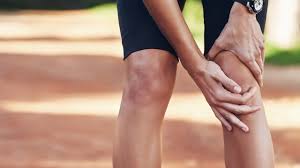What’s the BEST treatment for runners knee?

About a year ago a group of Canadian researchers compared the two most popular methods of treating ‘runners knee’, otherwise known as the dreaded patellofemoral pain syndrome (pain in the knee, typically behind the kneecap). This is the most common running injury in recreational runners and something we see multiple times weekly in clinic. Two camps have emerged regarding treatment; gait retraining and hip exercises, each espousing their methods as the best way to get runners back running.
The Canucks put one method against the other in 69 runners diagnosed with runners knee. But to make a research study useful you require something called a control group to compare your intervention groups against. Typically in sports medicine, control groups are ‘do nothing’ groups. In this study all 69 runners had 5 sessions of education. Then a third of them were assigned to gait retraining (changing the way they run), a third to an exercise program aimed at strengthening their hips/legs, and the other third just stopped with the education alone (the control group). So which group did best?
You would think that one of the two intervention groups, both of which have been proven to work repeatedly in research studies, would have won. Yet to everyone’s surprise none of the three groups actually proved best. At the start of the study, runners averaged 5-7/10 in pain and by the end ALL THREE GROUPS averaged just 3/10 and that effect stayed 3 months later showing that the treatment worked. What exactly does that mean?
Well to put it simply, just educating patients on how to control their pain, and how to run smarter and train safer (meaning decreasing the overall loading on your knee) proved just as effective as the other two interventions. Ouch!
So what was the magical ‘education’ that the runners learned? Its beauty is in its ridiculous simplicity:
- Run shorter distances, and if it doesn’t hurt do it frequently. Then increase distance gradually
- Add distance before speed and hills
- Run slower
- Avoid downhills and stairs
- Stop if the pain is more then 2 out of 10 and if it stay painful more than an hour post running (to be fair in our clinic we say 3-4/10).
Irene Davis, a researcher from the Spaulding Clinic at Harvard Medical School (who Pete took a course from a couple of years back), pointed out that the gait retraining advice was too generic, which is likely valid. And even the Canadian researchers themselves say they would still advise strengthening exercises as it has a great track record in runners knee.
So where does that leave us? It’s simple……let’s do all 3! All three interventions have proven effective, so why do just one?
If you see us with a case of ‘runners knee’, we will video capture your gait and try and lessen their impact forces. We will also assess their leg strength and prescribe specific exercises to address any deficiencies. Lastly, and apparently very importantly, we will work with you to lessen your running and overall knee load and give some common sense rules to abide by on your recovery.
We love controversial, but practical research…..especially when it’s Canadian!
